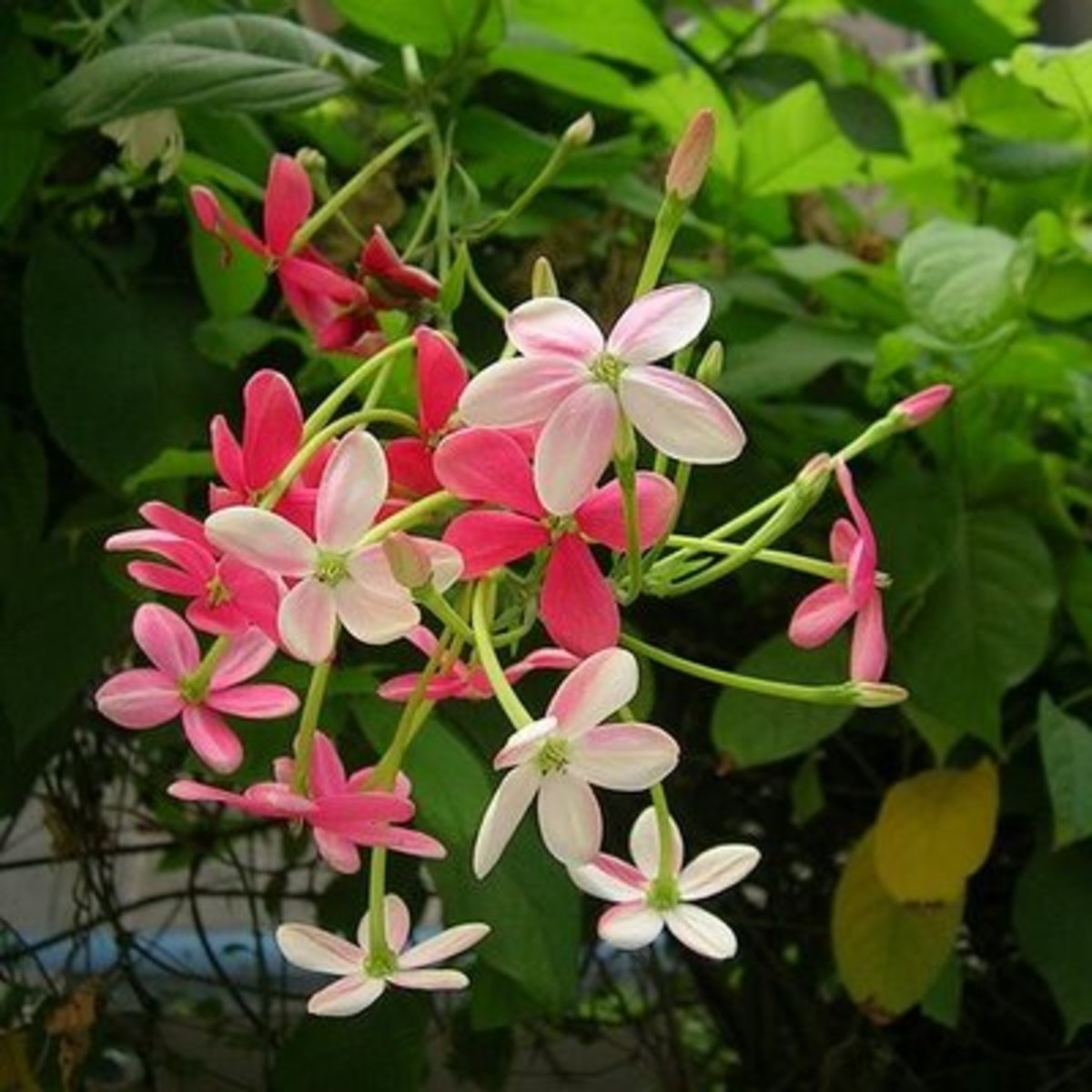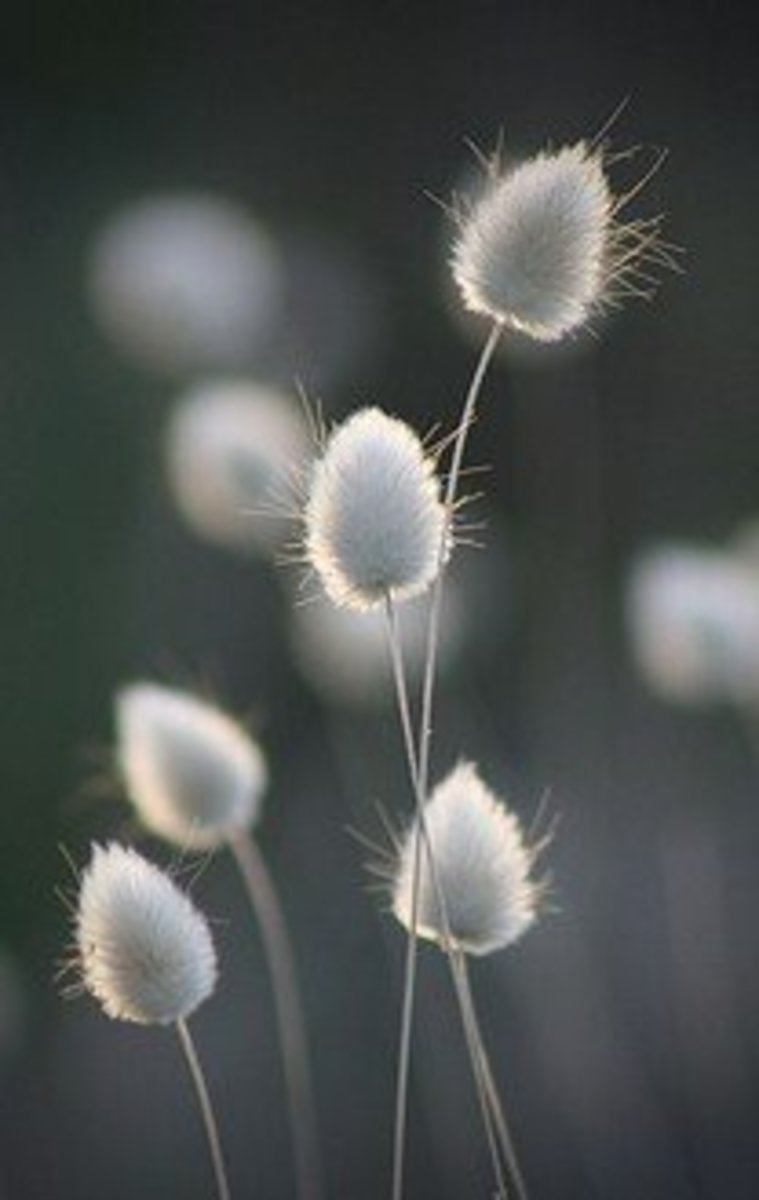Dark Plants: A Gothic Inspired Garden
Adding a Touch of Drama
I find it interesting when I come upon plants that are outside of the "norm" in color or texture. I always liked the idea of really deep, dark colors contrasting against lighter purples, pinks and whites in the garden.
I've incorporated many into my own landscape over the years and will share some of the more interesting plants in this article. All are easy to care for, so you can spend less time doing maintenance and more time enjoying the colors and scents in your garden.
I've included some annuals, shrubs, perennials and even some edibles that work well in any type of landscape design.
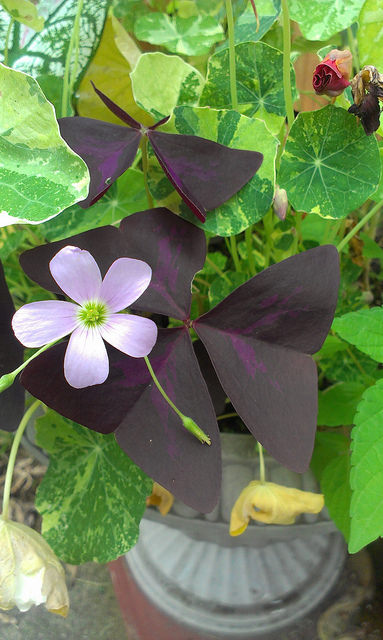
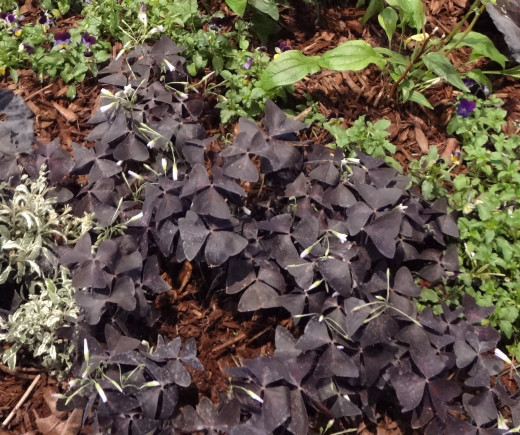
Dark Spring and Summer Annuals
Viola (aka Violets or Pansy): For instant color in the spring, you can't go wrong purchasing some Viola for your planters and front borders. You can grow them from seed as well, starting them indoors 6 weeks before your last frost date. This year I opted to purchase some starts because there are a bunch of new varieties on the market that I wanted to try; Midnight Glow and Blackberry from the Sorbet XP series. These are dwarf viola that produce loads of blooms. They only reach a mature height of 8 inches with a 10 inch spread. They bloom in Spring and Fall, going dormant in the heat of summer. They look super in containers or tucked among spring flowering bulbs.
Nemophila, Penny Black: Small, delicate plants only reach 6 inches tall with a 12 inch spread. These tiny plants are quite showy with striking black five petal flowers with white edges that are 3/4 of an inch in diameter. Direct sow the seeds in spring and barely cover. Be patient, they can take up to 30 days to germinate!
Oxalis, Burgundy Shamrock: Dark burgundy black foliage is the show stopper here!
A new and popular variety of Shamrock, I've been seeing this plant in virtually every garden bulb catalog I've received this spring. I liked the look of it so much, I will be growing this in my garden this year.
This variety of Shamrock has deep burgundy purple leaves and tiny, light pink flowers. It is a great container plant, houseplant or front-of-the-border plant. It is considered an annual in my zone (zone 5) but is perennial in Zones 6 to 10. It grows from a small bulb and prefers full sun to part shade and moist, well-draining soil. it flowers early through late summer and tops out at 12 inches in height.
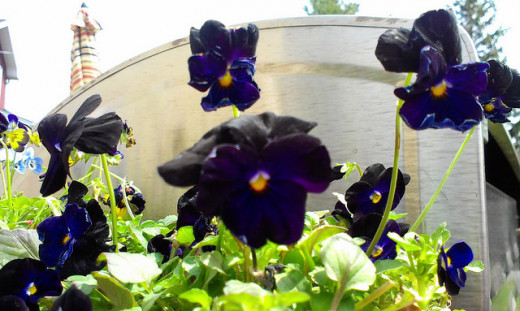
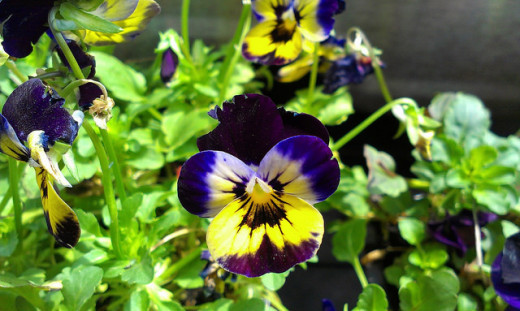
Do you have any darkly hued plants growing in your landscape?
Dark Hued Spring Blooming Perennials
Nothing is greater than having a burst of color following a dreary winter. These spring bloomers will surely fit the bill.
Heuchera, Obsidian: Heuchera aka Coral Bells are one of the first plants to start popping out of the ground in spring. They come in all sorts of colors, including several that are burgundy to deep, dark purple-black. They are low-mounding, only reaching about 8 to 12 inches tall (not including their flowers) and a similar spread. You can divide them every few years in early spring to create new plants. They have short-lived tiny flowers on tall spikes in early summer. They are hardy to Zone 4.
Frittilaria aka Checker Lily: Delicate, nodding flowers on tiny chive-like stalks. These grow from small bulbs or corms planted in the fall like tulips and other bulbs. They produce checker patterned flowers that come in burgundy and white, which look great together because of the contrast of colors. They bloom in mid-spring and die back in summer and fall.
Tulips: Such a wide-range of colors and bloom times available on the market today! Three of the more interesting colors are Queen of Night, which is a dark burgundy flower that is almost like velvet in appearance, Black Parrot, dark burgundy with frilly edges and Jackpot, dark burgundy with white edging. Plant the bulbs in fall for the following spring bloom. These three varieties bloom mid to late spring on 20 to 30 inch high stalks. All varieties make a good cut flower.
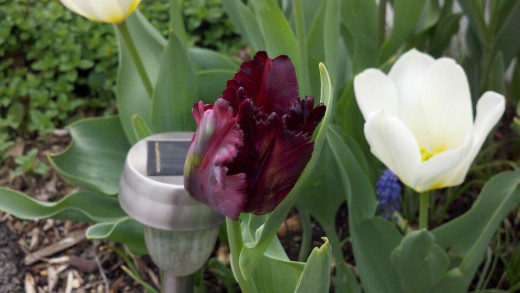
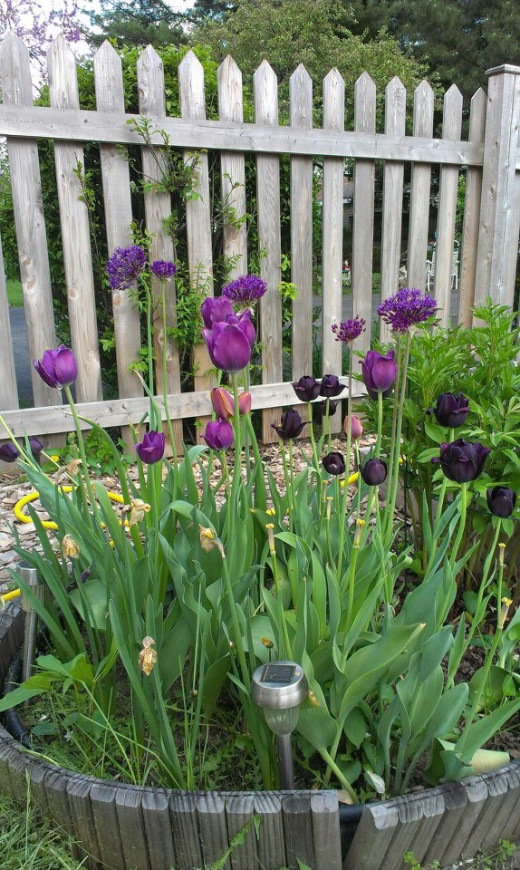
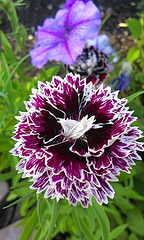
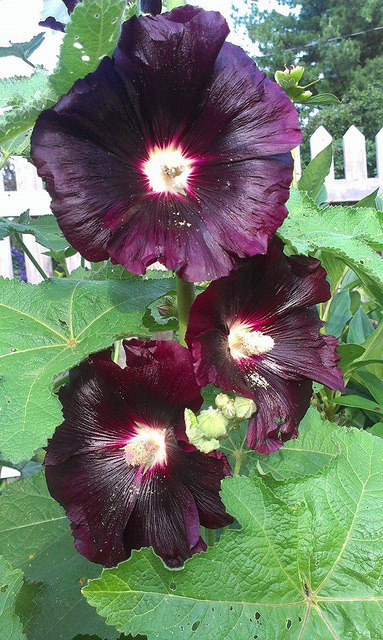
Dark Hued Summer Blooming Perennials
Once the color of spring fades, there are summer plants ready to take their place.
Dianthus Black and White Minstrels: These strongly scented flowers are black with white edges and smell like cloves. Dianthus blooms summer through fall in part to full shade areas.
When growing from seed, start them indoors about six weeks before your last frost date to get a jump start or if you prefer, you can also plant the seeds directly out into the garden after your last frost date, but blooms may take longer in the growing season to develop. You can also purchase starts from the garden center. Every few years, divide the clumps to make new plants.
Hollyhock, Nigra: Hollyhocks are extremely easy to grow from seed and the preferred method of propagation. For best results, plant your Hollyhock seeds in late summer/early fall for the following summer blooms. Hollyhocks do fine if planted in the spring, but your blooms will be less and the plants won't reach their full height, which is why they are started in the fall for the next summer bloom period.
Plant your seeds about 1/4 of an inch deep and 6 inches apart in full sun. The Hollyhocks aren't too fussy about soil, as long as it drains properly. They are best grown in Zones 4 through 10.
Nigra is a dark burgundy, nearly black single flowered variety . They grow on erect, fuzzy leaves and rarely need staking.
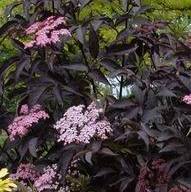
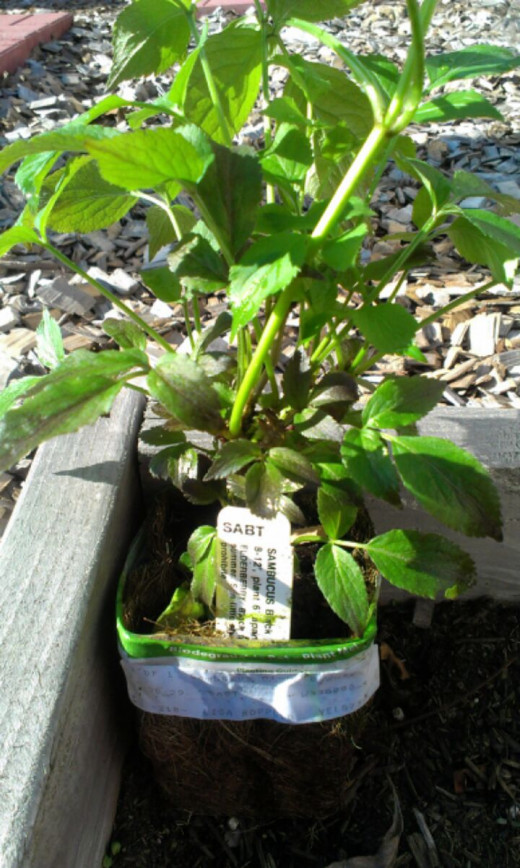
Deeply Hued Shrubs
Shrubs add height and anchor your landscape.
Purple-Leaf Sand Cherry: The Purple-leaf Sand Cherry is a very hearty shrub, growing from Zones 2 to 8. It produces small, white pleasantly-scented flowers in April followed by burgundy-purple leaves in the summer. In the fall, the leaves turn bright red for a stunning display. This is another great shrub for tight spaces or urban gardens, as it tops out to about 6 to 10 feet tall and 5 to 8 feet wide. It thrives in full sun, where the burgundy-purple leaves produce their best color. If planted in part-shade, the leaves will be a more green-burgundy hue.
Elderberry (Sambucus Nigra), Black Beauty: A very versatile shrub, the Elderberry does well as a hedge plant, for naturalizing and for rain gardens. It does well in wet soils and tolerates clay soil. Ideal for Zones 5 to 8, it has a mature height of 8 to 20 feet depending on the variety. It takes full sun to part-shade. "Black Beauty" has nearly black foliage, which takes a few seasons to fully develop. The flowers are bright pink and produce a striking contrast against the dark foliage.
It attracts butterflies. Birds love the edible berries, which are more plentiful when there is another Elderberry close by for pollination. The fruit is ripe when the berries turn purple-black.
The berries themselves are loaded with vitamins and the syrup is a common treatment for cold and flu, best taken at the onset of symptoms. I can attest to their magnificent ability to heal; I have taken the syrup a few times during the beginning of a cold and it had significantly shorten the illness.
The berries are commonly used in jams, syrups, pies and for making wine (if you can get to them before the birds do!).
The Elderberry is a moderately low-maintenance plant, but it does produce suckers, so if you don't want it to spread, you will have to extend some effort in pulling up the suckers.
Another variety, "Black Lace" has fine foliage similar to a fern-leaf Japanese Maple with the same coloring as Black Beauty.
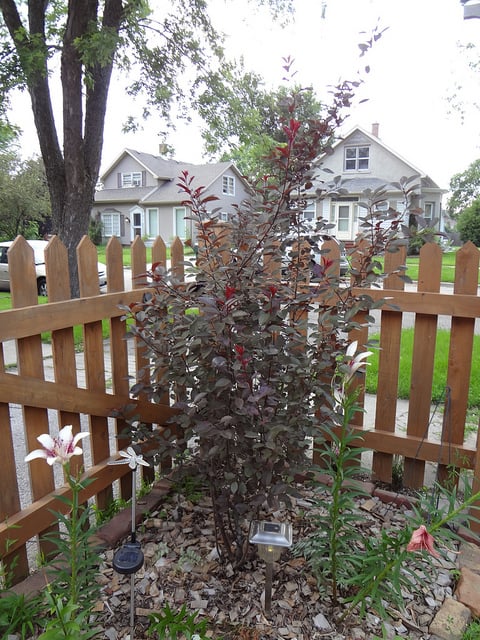
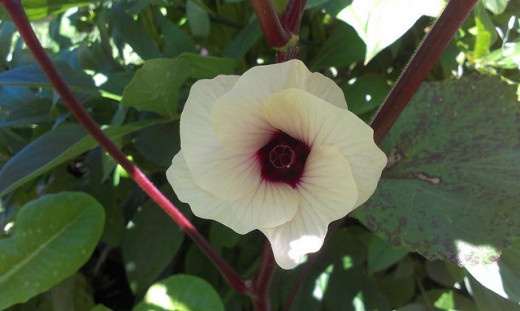
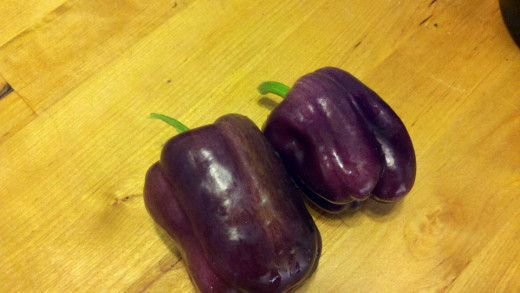
Deeply Hued Plants for the Vegetable Garden
Not only can you use dark plants in your ornamental garden, but there are several varieties of common vegetables and herbs that come in dark hues.
Basil, Purple Opal: Most commonly used in Thai cuisine, purple basil grows well from seed and has a mild basil flavor. Sow seeds directly into the garden after danger of frost 1/2 inch deep and 4 to 6 inches apart. Basil seedling should emerge in about 12 days.
Okra, Burgundy: I encourage you to give Okra a try! This variety has burgundy-red stems with green leaves, hibiscus looking flowers that are cream with red centers and burgundy okra pods. They get very tall, 3 to 4 feet! Start seeds indoors 6 weeks before your last frost. Seedlings emerge 6 to 12 days. Plant out after danger of frost, 6 to 12 inches apart.
Sweet Pepper, Pinot Noir: These sweet bell peppers are a purple-brown when mature. Start from seed 6 weeks before last frost or purchase starts in late spring. Plant out when danger of frost has passed. Tastes just like the traditional green bell pepper, but so much more interesting looking.
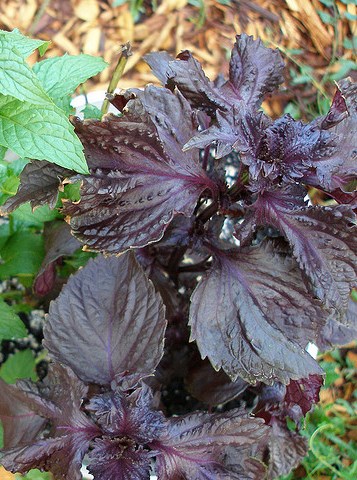
Pairing Dark Plants in the Landscape
I find the best way to incorporate dark plants is to intermingle with contrasting plants such as bright pinks, purples, blues, whites, oranges and yellows. When planting with oranges and yellows, the dark plants will recede while the bright plants will appear in the forefront of the planting bed. In contrast, when dark plants are placed with pastel colors such as pinks, purples and blues, they blend well into a soothing color combination where no one color stands out, rather they are viewed as a gradient whole. Keep this in mind when planning your space.
Experiment in your garden to see what strikes you the most.
If you are having trouble deciding about you potential color choices, snap some photos found on-line and bring them with you to the garden center. You can also go to the plant nursery and move plants next to each other to see how they might look before you decide to purchase and bring home.
Happy Gardening!

